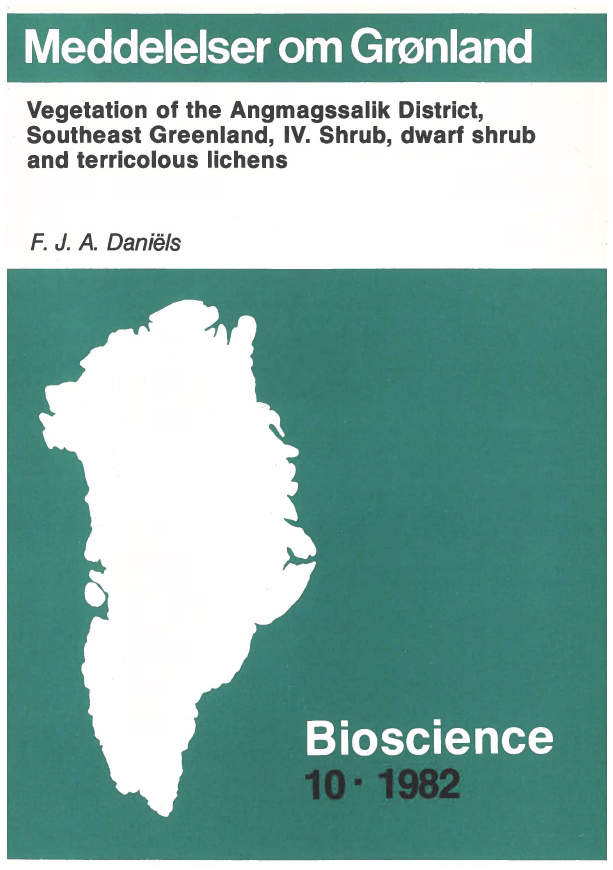Vegetation of the Angmagssalik District. Southeast Greenland, IV. Shrub, dwarf shrub and terricolous lichens
DOI:
https://doi.org/10.7146/mogbiosci.v10.142272Abstract
This paper deals with part of the results of the Dutch phytosociological expeditions in 1968 and 1969 to the Angmagssalik District, Southeast Greenland.
Shrub, dwarf shrub and terricolous lichen vegetation is treated here. The general part contains a description of the Angmagssalik District with emphasis on the applied methods.
The vegetation has been studied according to concepts of the French-Swiss School. The typology is based on about 250 records. The procedure of differentiation and classification of the plant communities is discussed. The term "decisive" differential taxon is introduced and defined. The association concept is considered from a regional point of view. The plant communities are arranged in a floristic hierarchic system.
Concerning habitat factors, the altitude a.s.l., slope and wind direction were measured. Other factors were roughly estimated. The soil types are indicated.
The following part contains a discussion of the vegetation units, with their floristic composition and physiognomy, habitat and distribution, and syntaxonomic position. This includes 24 vegetation units, I complex of communities, 11 communities and 12 associations. These are designed to the classes Oxycocco-Sphagnetea, Scheuchzerio Caricetea, Betulo-Adenostyletea, Loiseleurio-Vaccinietea, Carici-Kobresietea, Salicetea herbaceae and Juncetea trifidi. Eight new associations and I new alliance are presented. Some syntaxa have been revised or validated.
The classification by Molenaar (1976) of mire vegetation and chionophytic herb communities is discussed and a new classification is proposed. Dwarf shrub vegetation with Empetrum hermaphroditum and/or Vaccinium microphyllum on acid, mainly mineral soil is extremely varied in composition and physiognomy and is considered a zonal formation, which largely determines the aspect of the region. The Empetrum-Vaccinium community is the climax vegetation of the district.
The greater part of the communities and associations can be assigned to alliances described from Scandinavia, and the phytosociological relationship with that region is emphasized. Only the Dryadion integrifoliae and the Cladonio-Viscarion all. nov. are not known from Scandinavia. The vegetation of the Angmagssalik District has its own character, as shown on the association level by the Sphagno-Salicetum, the Rhododendro-Vaccinietum, the Gymnomitrio-Loiseleurietum, the CariciDryadetum and the Cladonio-Viscarietum (all new), which are actually restricted to the area. The other 7 associations are also found at the southern and western coasts of Greenland. Most vegetation types (associations and communities) have a lowarctic-oceanic distribution. A few types are also found in Iceland and Scandinavia.

Downloads
Published
Issue
Section
License
Coypyright by the authors and the Commision for Scientific Research in Greenland / Danish Polar Center/Museum Tusculanum Press as indicated in the individual volumes. No parts of the publications may be reproduced in any form without the written permission by the copyright owners.

